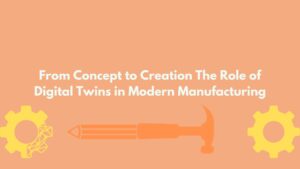Introduction
In the fast-paced and ever-evolving manufacturing industry, enhancing workforce efficiency is crucial for maintaining competitiveness and driving innovation. Advanced training programs that equip employees with the latest skills and knowledge can significantly improve productivity, quality, and job satisfaction. This blog explores the importance of workforce training, key training methods, and the benefits of investing in employee development.
Understanding Workforce Efficiency
Workforce efficiency refers to the ability of employees to perform their tasks effectively and productively, contributing to overall operational success. In manufacturing, efficiency is influenced by factors such as skill levels, knowledge, and access to modern tools and technologies. Advanced training programs ensure that employees are well-prepared to meet the demands of a dynamic industry.
Benefits of Advanced Training Programs
- Increased Productivity: Well-trained employees can perform tasks more efficiently, reducing downtime and increasing overall productivity.
- Improved Quality: Training programs enhance employees’ skills and knowledge, leading to higher-quality products and fewer defects.
- Enhanced Safety: Proper training reduces the risk of accidents and injuries, creating a safer work environment.
- Employee Satisfaction: Investing in training and development boosts employee morale, job satisfaction, and retention.
- Innovation and Competitiveness: Training encourages continuous learning and innovation, positioning manufacturers at the forefront of industry advancements.
- Adaptability: Employees equipped with diverse skills can adapt to new technologies and processes, ensuring operational flexibility.
Key Training Methods in Manufacturing
- On-the-Job Training (OJT): Employees learn by performing tasks under the supervision of experienced workers, gaining practical skills and knowledge.
- Classroom Training: Structured courses and workshops provide theoretical knowledge and foundational skills relevant to manufacturing processes.
- E-Learning: Online training platforms offer flexible and accessible learning opportunities, allowing employees to learn at their own pace.
- Simulation Training: Virtual simulations replicate real-world scenarios, enabling employees to practice skills and problem-solving in a risk-free environment.
- Mentorship Programs: Experienced employees mentor new hires, providing guidance, support, and knowledge transfer.
- Cross-Training: Employees are trained in multiple roles and functions, enhancing versatility and teamwork within the organization.
Implementing Effective Training Programs
- Assess Training Needs: Identify skill gaps and training needs through performance evaluations, feedback, and industry trends.
- Develop a Training Plan: Create a comprehensive training plan that outlines objectives, methods, and schedules for employee development.
- Leverage Technology: Use advanced training technologies, such as e-learning platforms and simulation software, to enhance learning experiences.
- Monitor Progress: Track employee progress through assessments, feedback, and performance metrics to ensure training effectiveness.
- Foster a Learning Culture: Encourage continuous learning and development by promoting a culture that values and supports employee growth.
- Evaluate and Adapt: Regularly evaluate training programs and make necessary adjustments to address evolving needs and industry changes.
Case Study: Workforce Training in Action
A leading aerospace manufacturer, [Company Name], implemented advanced training programs to enhance workforce efficiency. Key initiatives included:
- E-Learning Platform: Introducing an online training platform that provided employees with flexible access to courses and resources.
- Simulation Training: Using virtual simulations to train employees in complex tasks and emergency procedures, improving skill proficiency and safety.
- Mentorship Program: Establishing a mentorship program that paired new hires with experienced employees for personalized guidance and support.
These initiatives led to significant improvements in productivity, quality, and employee satisfaction, positioning [Company Name] as an industry leader in workforce development.
Conclusion
Enhancing workforce efficiency through advanced training programs is essential for maintaining competitiveness and driving innovation in the manufacturing industry. By investing in employee development, manufacturers can improve productivity, quality, and safety while fostering a culture of continuous learning and growth. Effective training programs not only benefit employees but also contribute to the overall success and sustainability of the organization. Manufacturers committed to workforce training can achieve significant advancements in operational efficiency and industry leadership.









